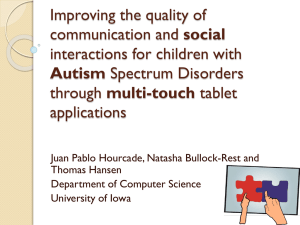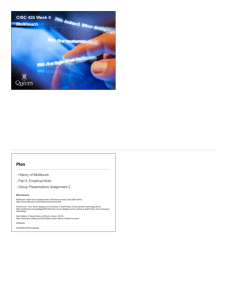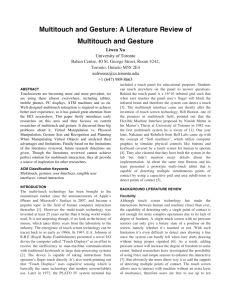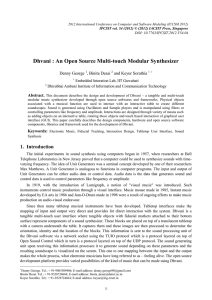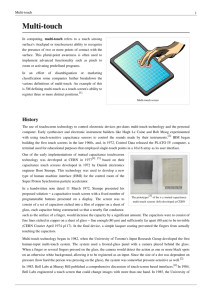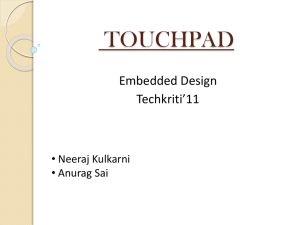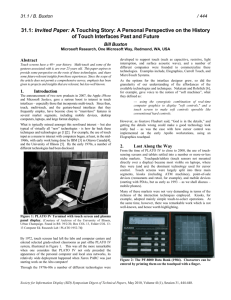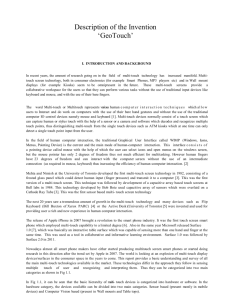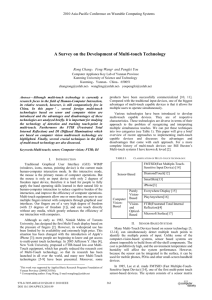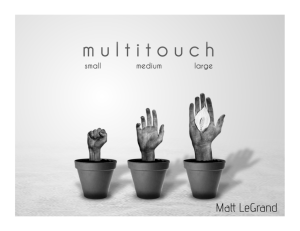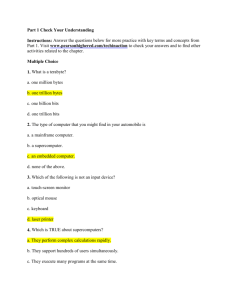multitouch - Interaction Design Umeå
advertisement
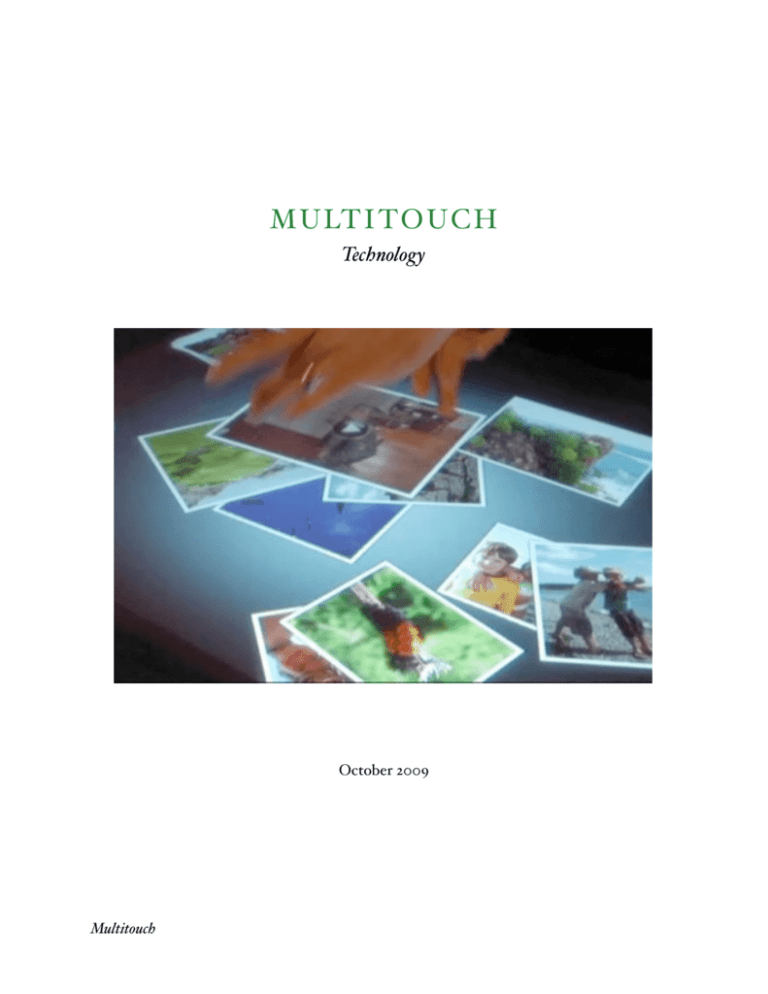
MULTITOUCH Technology October 2009 Multitouch MULTITOUCH Technology report Summer 2008 Introduction Multi-touch (or multitouch) denotes a set of interaction techniques which allow computer or mobile users to control graphical user interface with more than one finger at either application or system level. The term Multi-Touch is a trademark of Apple, Inc. Multi-touch consists of a touch screen (screen, overlay, table, wall, etc.) or touchpad, as well as software that recognizes multiple simultaneous touch points, as opposed to the single touchscreen (e.g. computer touchpad, ATM), which recognizes only one touch point. This effect is achieved through a variety of means, including: heat, finger pressure, high capture rate cameras, infrared light, optic capture, tuned electromagnetic induction, ultrasonic receivers, transducer microphones, laser rangefinders, and shadow capture. Many products using multi-touch interfaces exist and are being developed. Multi-touch is used on portable devices including the Apple iPhone, HTC Hero, Microsoft's Zune HD, Samsung Memory, and the Palm Pre, as well as desktop products such as the Microsoft Surface and the DELL Latitude XT2. History Multi-touch technology dates back to 1982, when Nimish Mehta at the University of Toronto developed the first finger pressure multi-touch display.[3] In 1983, Bell Labs at Murray Hill published a comprehensive discussion of touch-screen based interfaces. [4] In 1984 Bell Labs engineered a touch screen that could change images with more than one hand. The group at the University of Toronto stopped working on hardware and moved on to software and interfaces, expecting that they would have access to the Bell Labs work.[3] A breakthrough occurred in 1991, when Pierre Wellner published a paper on his multi-touch “Digital Desk”, which supported multi-finger and pinching motions. [5][6] Various companies expanded upon these discoveries in the beginning of the twenty-first century. Mainstream exposure to multi-touch technology occurred in the year 2007, when Multitouch Apple unveiled the iPhone and Microsoft debuted surface computing. The iPhone in particular has spawned a wave of interest in multi-touch computing, since it permits greatly increased user interaction on a small scale. More robust and customizable multi-touch and gesture-based solutions are beginning to become available, among them TrueTouch, created by Cypress Semiconductor. The following is a compilation of notable uses of multi-touch technology in recent years. The use of multi-touch technology is expected to rapidly become common place. For example, touch screen telephones are expected to increase from 200,000 shipped in 2006, to 21 million in 2012. Multi-touch displays Perceptive Pixel Microso" Surface Multitouch MultiTouch LCD Ce$ Different Multitouch Display Related Links Ut eu faccum nullamet nissi ea feugiat, quisi bla consecte tie exercilit inim dio dolobore magna faccum. Duis autem vel eum iriure dolor inim dio dolobore magna. Dolore eu feugiat nulla facilisis at vero eros et accumsan et iusto odio dignissim qui blandit praesent luptatum delenit augue duis dolore te feugait nulla. 1. http://en.wikipedia.org/wiki/Multi-touch 2. http://multitouch.fi/ 3. www.nuigroup.com/touchlib/ (Windows only) 4. www.ccv.nuigroup.com/ (cross-platform) Way to use Today,multitouch is widely used in Mobile area, computer, advertisement table.... I think it can be widely used in education for both normal kids and disability kids since the feedback is very easy to understand. Multitouch
